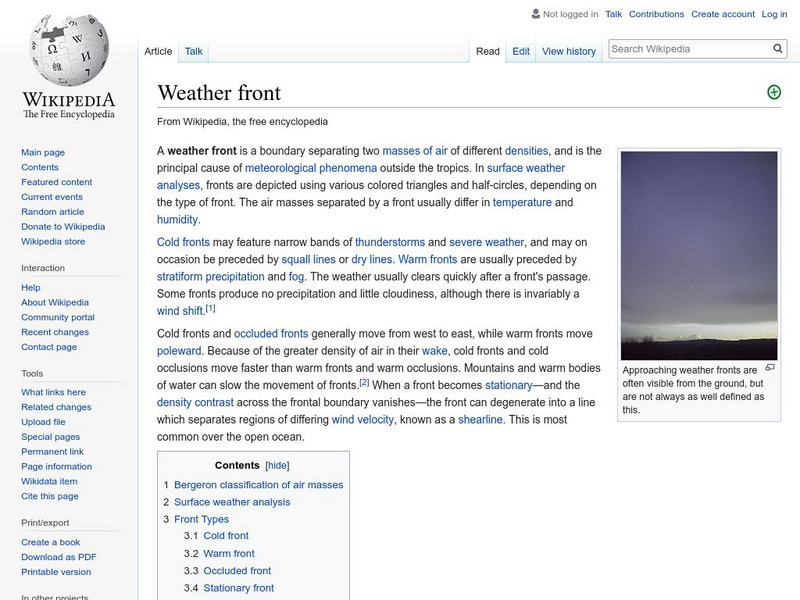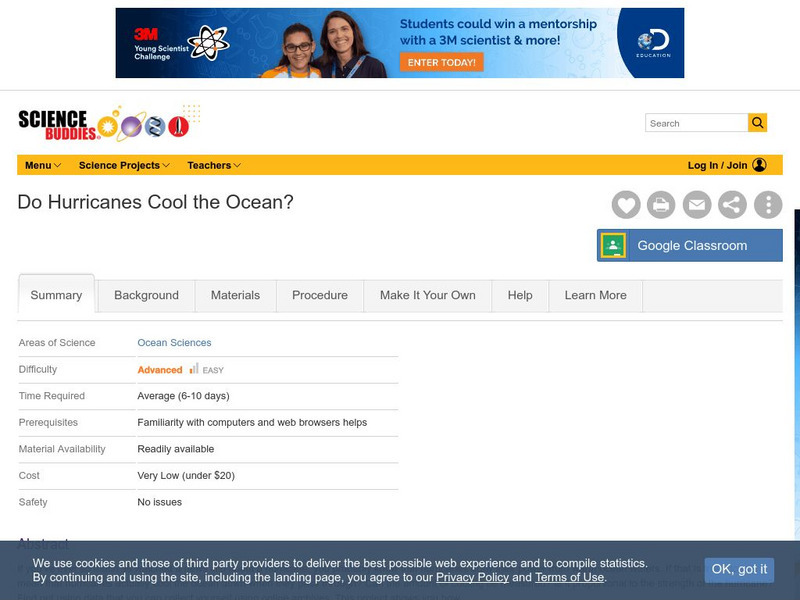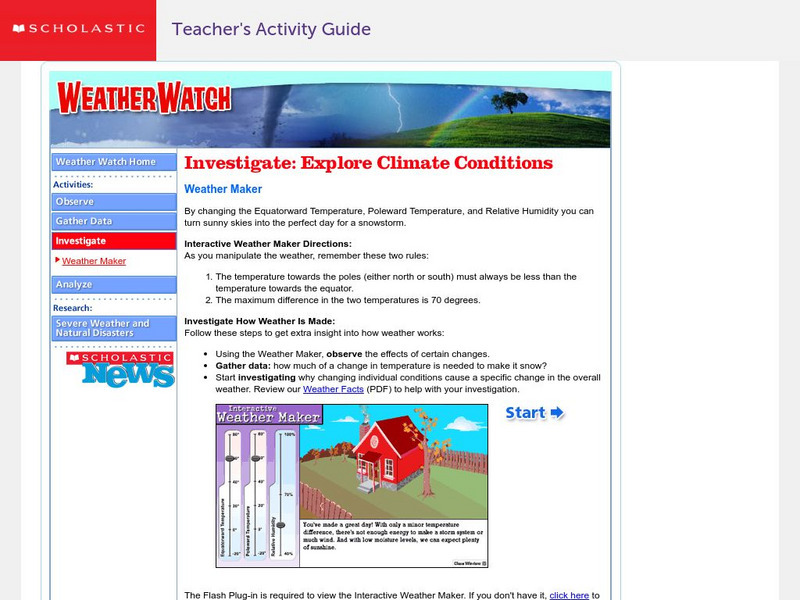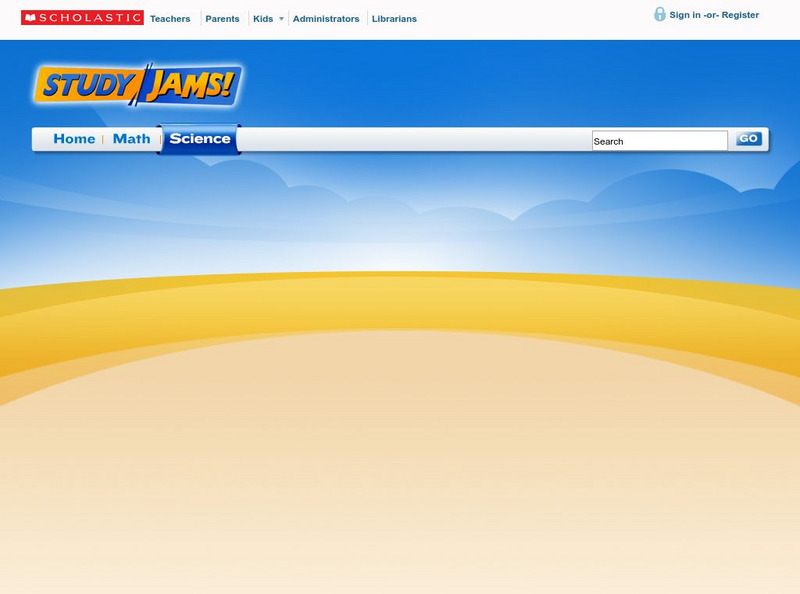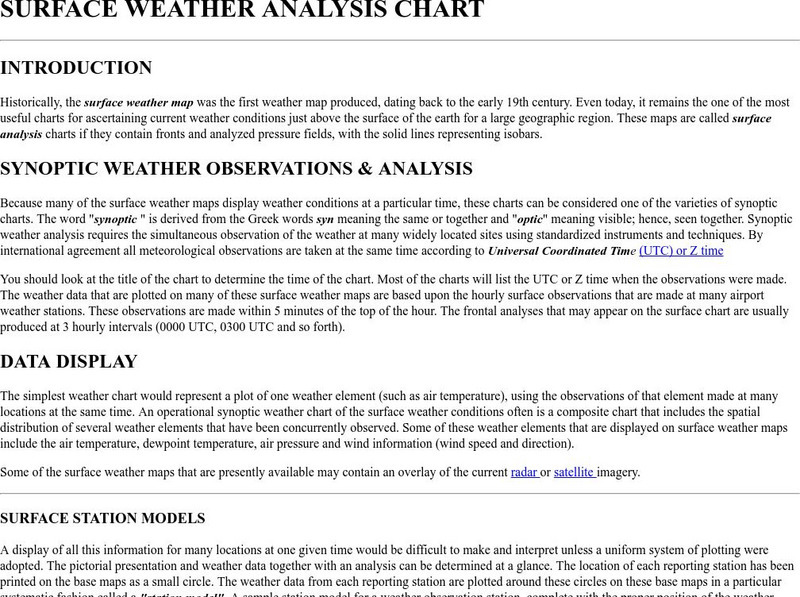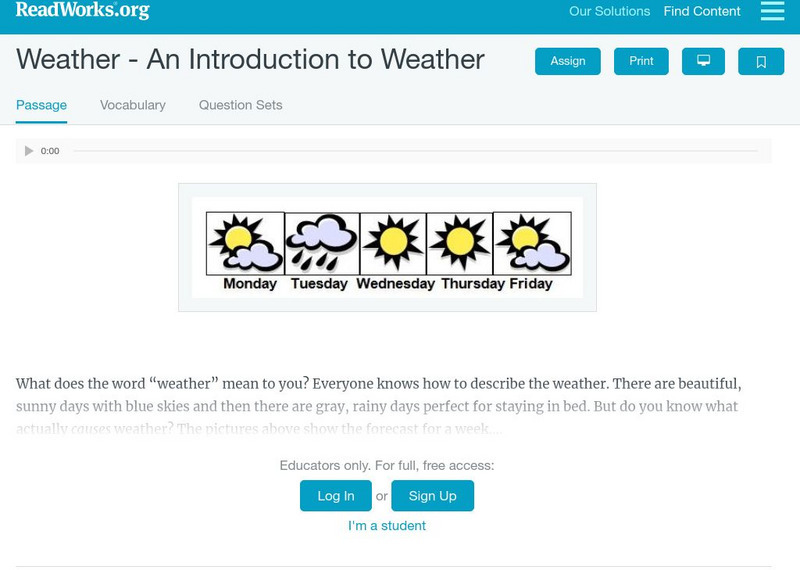PBS
Pbs Teachers: Collapsing Bottle Experiment
Explore the effect of changing temperature on air pressure using a plastic soda bottle.
Science and Mathematics Initiative for Learning Enhancement (SMILE)
Smile: Aspects of Weather
A detailed weather lesson plan written for the primary, intermediate, and junior high level. Topics covered are weather symbols, thermometer, graphing temperature results, clouds, moisture and air pressure.
PBS
Pbs Teachers: Bottle Fountain Experiment
Demonstrate how heating expands air molecules by constructing a bottle fountain powered by air pressure.
Wikimedia
Wikipedia: Weather Front
This Wikipedia site tells all about weather fronts, or boundaries between two air masses with differing characteristics. Includes many hyperlinked terms to additional information on related subjects.
University of St. Andrews (UK)
University of St. Andrews: Climate and Weather Systems
This online lecture covers topics of air pressure, density and temperature.
A&E Television
History.com: Challenger Explosion: How Groupthink and Other Causes Led to the Tragedy
Seven lives were lost as communications failed in the face of public pressure to proceed with the launch despite dangerously cold conditions. January 28, 1986, The sun had been up for less than an hour and air temperatures were a few...
Exploratorium
Exploratorium: Global Climate Change: Atmosphere
Use this site to explore real scientific data relating to the atmosphere. With this information you can gather evidence, test theories, and come to conclusions. Click on the data examples to view a full scale version.
Other
American Meteorological Society: Data Streme Atmosphere
This site provides an extensive amount of weather information. Includes current information, forecasting, and historic weather related events. Weather map symbols and terminology explained.
Science Buddies
Science Buddies: Do Hurricanes Cool the Ocean?
If you've ever so much as watched a news clip about a hurricane, you probably know that hurricanes draw their power from warm ocean waters. If that is true, does it mean that hurricanes actually cool the ocean down when they pass...
University Corporation for Atmospheric Research
Ucar: Create a Portable Cloud
In this hands-on activity, students experiment to discover how moisture, pressure, temperature, and condensation nuclei play a role in cloud formation.
Scholastic
Scholastic: Investigate: Explore Climate Condition
An interactive weather maker allows students to manipulate temperature and humidity and to view the type of weather that results.
TeachEngineering
Teach Engineering: Weather Basics
Students are introduced to the basics of the Earth's weather. Concepts include fundamental causes of common weather phenomena such as temperature changes, wind, clouds, rain and snow. The different factors that affect the weather and the...
Other
National Physical Laboratory: The History of Length Measurement
This resource provides historic information on length measurement in the United Kingdom. Click on the topics on the left toolbar of the article to find out more information.
Scholastic
Scholastic: Study Jams! Science: Weather & Climate
A video and a short multiple-choice quiz on the topic of weather and climate, and the difference between them.
University of Wisconsin
Atmospheric and Oceanic Sciences: Surface Weather Analysis
Explains the use of synoptic weather analysis in preparing weather maps and forecasting. Discusses the use of symbols as well.
Other
Digital Library for Earth System Education: Teaching Box: Essentials of Weather
A suite of lessons focusing on the basic elements of climate and weather. Inquiry-based exploration of extreme weather events and the factors of weather including clouds, wind, air pressure, temperature, and the water cycle.
Texas Instruments
Texas Instruments: Vernier Boyle's Law
The primary objective of this experiment is to determine the relationship between the pressure and volume of a confined gas. The gas we use will be air, and it will be confined in a syringe connected to a Pressure Sensor (see Figure 1)....
TED Talks
Ted: Ted Ed: How Does an Atom Smashing Particle Accelerator Work?
An atom smasher, or particle accelerator, collides atomic nuclei together at extremely high energies, using engineering that exploits incredibly cold temperatures, very low air pressure, and hyperbolically fast speeds. Don Lincoln...
Read Works
Read Works: Weather : An Introduction to Weather
[Free Registration/Login Required] Requires free membership.T his passage is a stand-alone curricular piece that reinforces essential reading skills and strategies and establishes scaffolding for vocabulary learning. It contains...
Discovery Education
Discovery Education: Weather Maps
This site provides a lesson plan in which groups of students will each investigate a different type of weather map use for weather forecasting. Also includes discussion questions, extension ideas, and links to additional sites for more...





